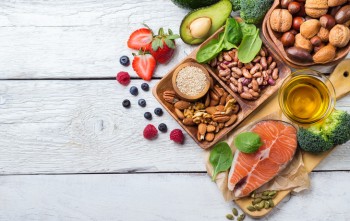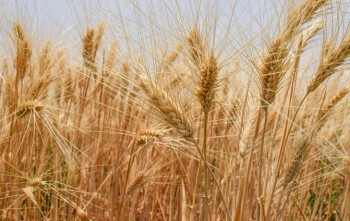Low Glycemic Index Diet: The Secret to an Ideal Body Weight

Shirleen Gabriele Havellar S,Gz
Nutritionist
Being able to maintain an ideal body weight without struggling with strict diets is a dream for many. One way we can try to achieve this is by consuming foods with a Low Glycemic Index (Low-GI). The Glycemic Index is a number that describes how quickly carbohydrate-containing foods increase our blood sugar levels. Foods with a Low-GI tend to raise blood sugar slowly, providing us with more stable and long-lasting energy.
Let's see how a Low-GI diet can help prevent weight gain!
Why is the Glycemic Index Important?
First, let's understand why the GI is important. High-GI foods like white bread and regular sugar can cause a rapid spike in blood sugar, followed by an equally rapid drop. This can make us feel hungry again quickly, leading to overeating. On the other hand, Low-GI foods like green vegetables, nuts, and some fruits are digested more slowly by our digestive systems, making us feel full longer. Low-GI foods also tend to be more nutrient-dense.
Other than that, choosing the right type of sugar is also crucial. You might think that all types of sugar are the same and have a High-GI, but in reality, not all sugars have a High-GI. For example, Lontar Sugar, which is similar nutritionally to coconut and palm sugars (together often referred to as GulaRamah), has a Low-GI, with a score of less than 54, and is also enriched with various nutrients.
The Relationship Between Low GI and Body Weight
According to recent studies, a diet with Low-GI foods can help control body weight. A study published by Nutrients concluded that individuals following a Low-GI diet experienced more significant reductions in weight, waist circumference, and fat mass compared to those consuming High-GI foods.
Moreover, a journal published by Obesity Reviews found that a Low-GI diet not only helps in weight loss but also in maintaining an ideal body weight in the long term. This research also shows that a Low-GI diet can reduce the risk of obesity and related diseases such as type 2 diabetes and heart disease.
So, what are some examples of Low-GI foods that we can include in our daily menu? Foods are considered Low-GI if their GI value is below 55.
Here are some examples:
- Green vegetables such as spinach, broccoli, and kale.
- Fruits such as apples, oranges, and avocados.
- Nuts such as cashews, mung beans, and peanuts.
- Complex carbohydrates such as brown or red rice, taro, oats, and corn.
- Low-GI sugar like Palm Sugar, Lontar Sugar, Coconut Sugar, Dates.
Practical Tips for a Low-GI Diet
To start a Low-GI diet, you don't need to drastically change your entire diet, but you can follow some practical tips:
- Choose more complex carbohydrates, such as brown rice, root vegetables, corn, potatoes, and whole wheat bread.
- Eat whole fruits rather than fruit juices.
- Add more vegetables to every meal.
Additionally, choosing snacks made from natural and Low-GI ingredients like YAVA can be a practical choice. YAVA is committed to supporting Indonesians in achieving optimal health, which includes maintaining more stable blood sugar level, with selects Lontar Sugar, various nuts, and seeds as our main ingredients, making YAVA a delicious yet healthy choice for breakfast and snacks. YAVA also offers many different variants of snacks such as Granola Bites, Granola Puffs, Krispi Puffs, and others that can be found in your favorite offline and online stores.
Implementing a Low-GI diet can be an effective and enjoyable way to maintain an ideal weight and overall health. By choosing the right foods, we can stay full longer, reduce excessive snacking, and feel more energetic throughout the day. So, let's start considering Low-GI foods in our daily menu for a healthier life!
Reference
- Low glycaemic index diets as an intervention for obesity: a systematic review and meta-analysis
- What Is Glycemic Index
- The Health Effects of Low Glycemic Index and Low Glycemic Load Interventions on Prediabetes and Type 2 Diabetes Mellitus: A Literature Review of RCTs


















